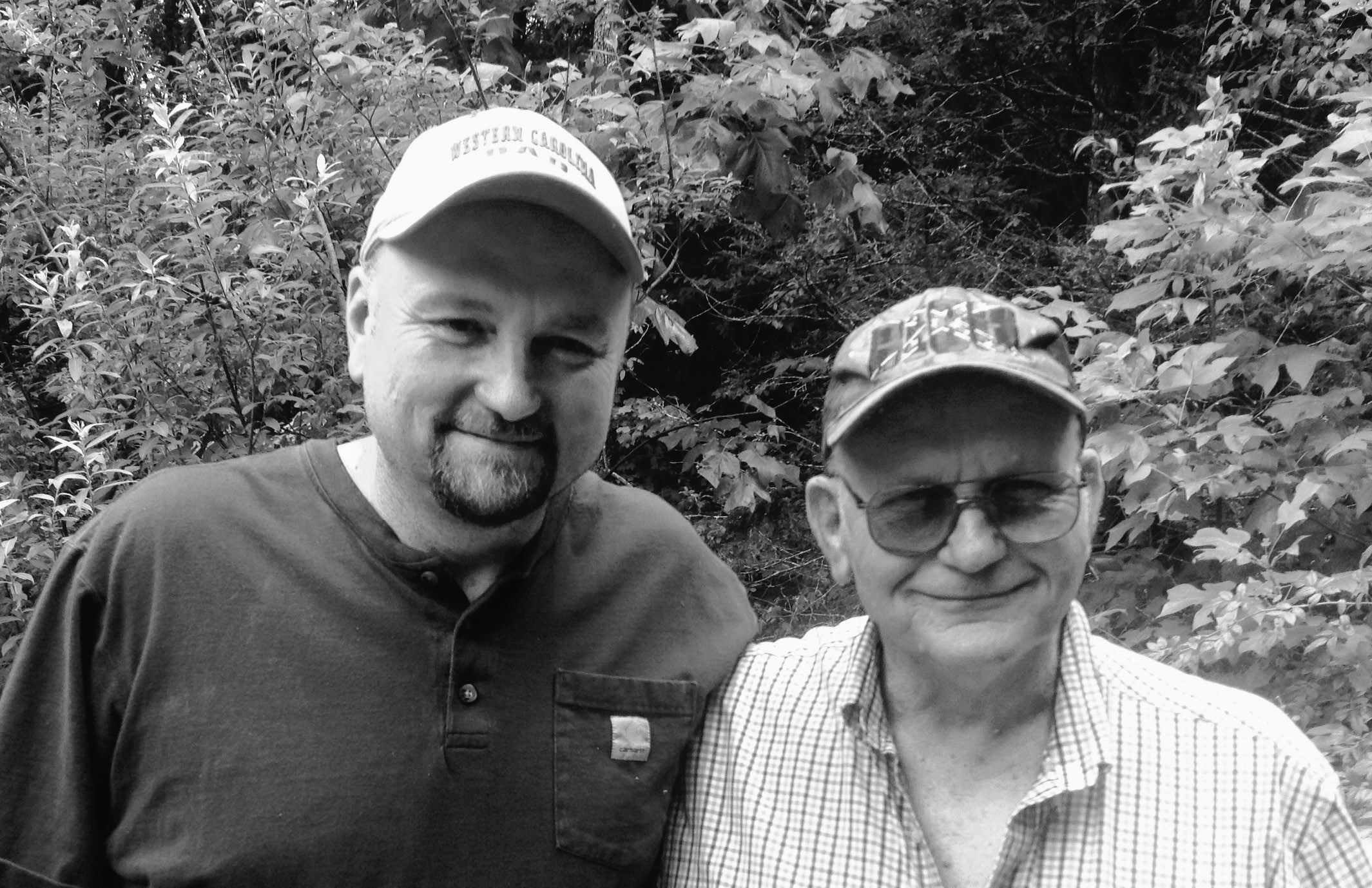Wild Ginseng
Interviews with four men who still hunt it the right way
IF YOU DIDN’T KNOW what they were talking about, you might think the Hayes boys were gold prospectors. “To me, it’s spiritual,” says Bob Hayes. “Spiritual because it’s getting harder and harder to find, and when you find it, you thank God it’s still around.”
Says his son, James Thomas “Tommy” Hayes, “Yeah, it makes you feel really good because you know if you find one, you’re going to find others in that area.”
“I just sell it,” chimes in Isaac Thomas Hayes, Tommy’s son and Bob’s grandson. The Hayes boys are standing in the kitchen of Bob’s home, one he built himself on a hill just outside Mountain City, Georgia. And they’re discussing not gold, but the next best thing to a lot of people: wild American ginseng root.
“Here you have three generations of ginseng folks,” Bob says. “I taught Tommy, and Tommy taught Isaac.” And Bob learned how to recognize and dig wild ginseng from his parents, Arthur and Mary Hayes, whose family lived around the edges of western North Carolina, Tennessee, and Georgia.
In all that moving around, though, Bob learned a lot of things about the woods and how to survive on meager earnings. Wild ginseng was a treasure worth looking for.
“I was about seven years old,” he says, “and Mom and Dad would take us up there [on Pack Mountain in Cherokee County, North Carolina]. Mama would always cook a big pot of beans the day before. And that morning of the hunt, she’d cook a pone of cornbread, and she’d take it up on that mountain, put it in a certain spot [in a tree so the critters wouldn’t eat it], and tell us to meet back there at lunch. We were usually back before lunch because we were hungry.”

PLATE 30 Tommy Hayes and his father, Bob
That was in the 1950s, when wild ginseng that had been dried would be shipped to New York to be sold there or elsewhere. A pound would bring about seventeen dollars. In 2015, the price had leaped to several hundred dollars.
And why is wild ginseng, or “sang,” as they say in the mountains of Southern Appalachia, worth so much money?
Well, it’s said to prolong life.
Most of the wild sang dug in Southern Appalachia goes to China. “They pay high dollar for it,” Tommy says. “They sell it by the ounce or half ounce. It’s very expensive. The Chinese then pulverize it and sell it to the Chinese public. To them, it’s an aphrodisiac.”
But the root of the wild plant has other, more important benefits, researchers say. The Mayo Clinic Cancer Center conducted a ginseng trial that showed “good results in helping cancer patients with fatigue, when compared with a placebo.” And in 2015, researchers at Vanderbilt-Ingram Cancer Center found that ginseng may improve survival and quality of life following a diagnosis of breast cancer.
But researchers warn that the quality of the ginseng is important. Just anything off the pharmacy shelf may not help at all. Which supports what the Hayes boys have been saying all along: You must know what you’re looking for when you go into the woods, and if the ginseng is not ready for harvest, don’t harvest it.
“We don’t dig anything that’s small because that’s for future digs,” Tommy says. “If it’s not five years old, it’s not marketable. It’s not potent. If you dig it and it’s small, you judge how old it is, and if it’s not old enough, you put it back in the ground.” Trouble is, some ginseng hunters don’t follow those rules.
“There’s too many hunting before the season,” Bob Hayes says. “That’s the problem. They also dig everything. And that’s why sang is going out. I wish they’d catch every one of them.”
And, in 2014, the law did catch several men near Highlands, North Carolina, who had spread out in a row to dig young ginseng right and left, a process known as “rowing.” They were charged under North Carolina’s ginseng-protection laws. Taking ginseng from another’s land with intent to sell is a felony.
“Some people go through the mountains like a vacuum cleaner,” Tommy says, “but what are you going to do the next year?”
Sometimes, he says, it’s not even ginseng that’s being dug. “Most beginners dig poison oak like crazy,” he says. “And hickory sprouts will fool you. People will truck halfway down a mountain to dig a hickory sprout.” Adds Bob: “Especially in the fall of the year because it turns yellow,” like ginseng. “And there’s a certain briar” that looks like ginseng, too.
Ricky Alexander, a ginseng convert and friend of Bob’s, drops in at Bob’s home and joins the conversation in the kitchen. He says that walking through the woods looking for sang does wonders for his attitude toward life. “Most of it, I keep for myself,” he says. “I haven’t harvested enough to sell.”
Asked if he feels better when he takes sang, Alexander says, “Yeah, when I get run-down. Like in the summertime, I work seven days a week on the property [apartments next door to Bob], and working for other people.” Looking for ginseng in the woods is peaceful, he says, and taking it is beneficial. He takes no store-bought medicines.
Still a novice in ginseng hunting, Alexander says he must be careful where he hunts. He doesn’t want to hunt on another person’s land without permission, and he doesn’t want to dig around someone’s home, as someone did at Bob’s place.

PLATE 31 Ricky Alexander, a ginseng convert and friend of Bob’s

PLATE 32 Isaac Hayes, Tommy’s son, enjoys gathering.
While hunting and harvesting ginseng is part of hammering out a living for some people, it’s more of a hobby for Tommy and Isaac.
Tommy works full-time as a builder; he’s pastor of Covenant Baptist Church in Murphy, North Carolina, and the father of four boys. Isaac, a student at Western Carolina University, is the only one interested in digging sang.
“We’ll get in maybe six [ginseng] trips a year,” he says. “So a good year for us is three dried pounds.” It takes three or four pounds of wet ginseng, roots just out of the ground, to make a pound of dried, but that amount depends on the quality of the root.
Bob knows of three types of wild ginseng in this area: five-leaf—the most common in the mountains of Southern Appalachia—three-leaf, and double-decker. He hasn’t found any three-leaf ginseng, and he has discovered double-decker in only one place. “Double-decker stands this high,” he says, holding his hands at his waist.
Mature wild ginseng bears berries, and sometimes it takes eight years for them to appear, Bob says. But the absence of berries doesn’t mean the ginseng is not old enough to harvest; it could be that birds ate the berries, which they sometimes deposit next to logs, a good place to find more ginseng. All ginseng, whatever its type, needs plenty of shade. Store-bought ginseng, along with the stuff found in energy drinks, is often grown commercially with fertilizer, which enhances growth. “It’s tame sang,” Tommy says. “Tame sang is cheaper, but it doesn’t have all the good properties that wild sang has.” Tame sang has bigger, whiter, smoother roots. On wild ginseng, the buyer looks for a darker tint on the skin, stretch marks on the roots, and lifelines that indicate the approximate age of the plant.
As a child growing up in western North Carolina, Bob was never sure what the next day would bring. His father made moonshine, and when the law was on his tail, the family often packed up and moved. “Sometimes we’d go to at least three schools a year,” he says. “We’d get off the bus and [my parents would] be already packed. Well, it ain’t funny on kids. I always said that if I had a kid, he’d go to school, and Tommy went to the same school [his entire childhood].”
Bob’s family moved to Murphy after his father became disabled. He and his mother worked at a restaurant, usually eight-hour shifts. “I’d work the third shift and try to get on in to school,” he says, “and I’d go to sleep in school.” At sixteen years old, he dropped out and began working in chicken houses to help care for his parents. When a deadly influenza hit the area in the late 1950s, “Mama kept us all alive,” he says. “She was an herbalist, and she could make some of the strangest-tasting tea you’ve ever drunk in your life.”
But through it all, Bob learned how to survive by developing many skills—logging, construction, plumbing, electrical work—and getting jobs wherever he could find them. Even after he married and moved into his own home, life was not easy.
“Around Murphy,” Tommy says, “there wasn’t much work for Mom and Dad. They found work where they could. So in the summer, we’d sell lizards. We’d go up in the mountains and creeks, finding lizards. And then we would scatter out and dig ginseng back down the mountain. We did that about every weekend. We also picked up night crawlers. All the money went into one kitty to pay the bills. We sold everything.”
Tommy learned that ginseng could be beneficial, but he also learned what not to eat from his father. One day, his dad cut off part of an Indian turnip and handed it to his young son. He ate it. About thirty seconds later, the pain hit. “It’s not hot,” Tommy remembers. “It’s like needles. It’s like taking a bunch of needles and throwing ’em in your mouth and crunching down on them. I took off running, and it was probably a half a mile to the next spring, and I drunk that spring dry and it didn’t help a bit.”
As a pastor, Tommy feels good about digging ginseng if he and his son do it right, the way Bob showed them. “God put everything we need here,” he says. “[The Bible] does not identify ginseng, but it does say that God put all this stuff here for man’s use. It’s up to man to figure out what’s good and what ain’t. How you learn that is usually trial and error.”
Tommy and Isaac enjoy hunting ginseng, not just for the extra money, but because of the opportunity it affords them to spend time together, walking around enjoying nature.
Bob Hayes doesn’t get out much now because of a breathing problem. He enjoys staying inside his cozy home on the hill, where he reads constantly. But he can take satisfaction in knowing that his son, grandson, and friend Ricky are following his lead, hunting ginseng on Pack Mountain. A family tradition lives on.